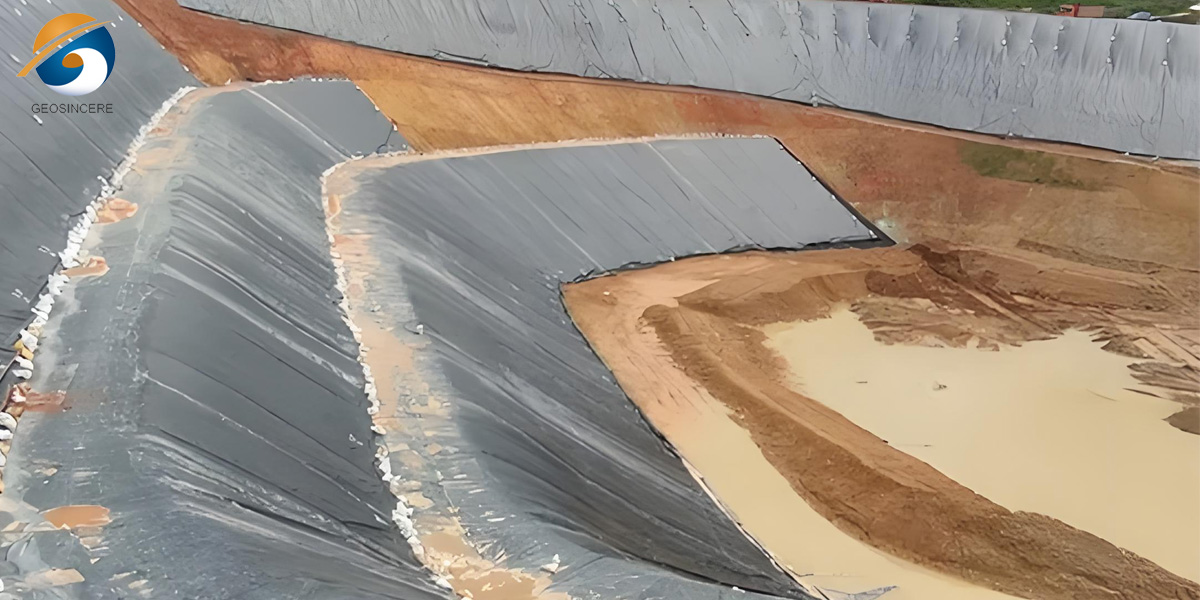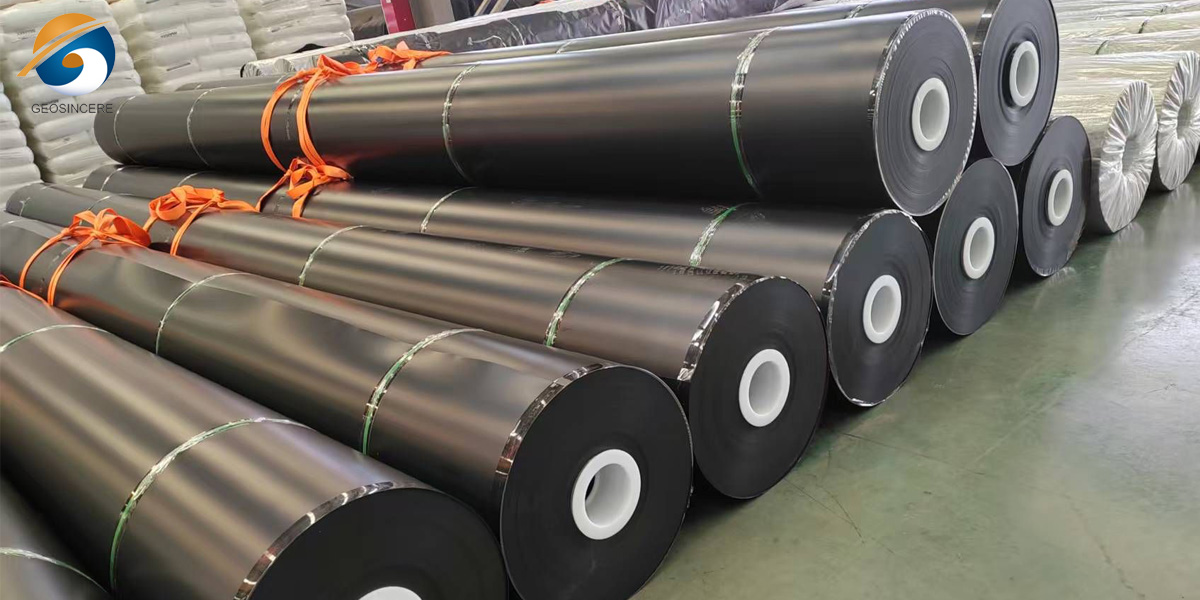Top 7 Features of HDPE Pond Liner for Landfills
At the coronary heart of current strong waste management, impervious landfills serve as the final repository for municipal and industrial refuse. Within these crucial facilities, the hdpe pond liner for landfills stands as an crucial environmental barrier, forming the core element of cutting-edge landfill lining systems. Its seven paramount elements jointly assemble a bold chemical, physical, and temporal shield, safeguarding soil and groundwater from contamination.
1. HDPE Pond Liner for Landfills Unmatched Puncture and Tear Resistance: Withstanding Landfill Rigors
Landfills are inherently antagonistic environments. Sharp development debris, irregular industrial waste, and the relentless strain exerted by using heavy equipment (bulldozers, compactors) difficulty liners to intense bodily stress. HDPE leverages its excessive molecular weight, excessive crystallinity (typically exceeding 90%), and excessive density to supply extremely good mechanical strength. Its puncture resistance (tested per ASTM D5514) some distance surpasses different bendy membranes, efficiently countering penetration by way of rocks, roots, and different sharp objects. Simultaneously, its gold standard tear resistance (e.g., trapezoidal tear energy per ASTM D1004) ensures localized harm does no longer comfortably propagate. This resilience keeps structural integrity amidst worrying landfill operations, stopping the formation of leakage pathways due to bodily compromise.
2. HDPE Pond Liner for Landfills - Exceptional Chemical Resistance: The Ultimate Defense Against Aggressive Leachate pond
Landfill leachate is a complex and highly corrosive "chemical cocktail," containing high concentrations of organic acids (like volatile fatty acids), inorganic ions (ammonia, chlorides, sulfates), heavy metals, and various dissolved organic contaminants. The non-polar molecular structure of HDPE grants it remarkable inertness. It exhibits outstanding resistance to a vast majority of strong acids, strong alkalis, salt solutions, organic solvents, and oils (validated by long-term chemical exposure tests like ASTM D5747). Its molecular chains are highly resistant to attack, degradation, or swelling by these chemicals, thereby preserving low permeability over the long term and forming the crucial chemical barrier against leachate attack.
3. HDPE Pond Liner for Landfills - Extremely Low Permeability Coefficient: Constructing a Reliable Hydraulic Barrier
The core function of a liner is to block fluid migration. HDPE geomembrane is inherently impermeable materials, boasting an exceptionally low permeability coefficient (typically less than 1 x 10<sup>-13</sup> cm/s, exceeding requirements of regulations like EPA Subtitle D or China's GB 16889). This means that under reasonable design hydraulic heads, the volume of liquid migrating through an intact HDPE membrane itself is negligible, virtually zero. This intrinsic ultra-low permeability is the fundamental physical guarantee for achieving the environmental goals of "zero leakage" or "minimized leakage" in landfills.
4. HDPE Pond Liner for Landfills - Superior Ultraviolet (UV) Resistance: Ensuring Durability During Installation and Service
During landfill development and possible brief publicity phases, liner substances are subjected to severe photo voltaic ultraviolet radiation. Unstabilized polymers are prone to photo-oxidation, main to embrittlement, cracking, and speedy energy loss. High-quality HDPE geomembranes contain enough portions of environment friendly carbon black (typically 2%-3%) or different specialised UV stabilization structures (e.g., Hindered Amine Light Stabilizers - HALS). These components efficiently take in and dissipate UV energy, substantially retarding photo-degradation (verified with the aid of accelerated getting older assessments like ASTM D7238). This ensures the liner retains its flexibility and bodily houses all through set up and incidental exposure, laying the basis for long-term overall performance beneath shielding cowl soil.
5. HDPE Pond Liner for Landfills - Broad Temperature Adaptability: Accommodating Seasons and Geographic Variation
Landfills ride enormous temperature ranges: from sizzling summer time floor highs (potentially exceeding 50°C / 122°F) to frigid iciness lows in northern climates (potentially beneath -30°C / -22°F). HDPE continues top notch flexibility and mechanical houses throughout a large temperature spectrum (typical software vary approx. -60°C to +80°C / -76°F to +176°F). Its extraordinarily low glass transition temperature (Tg) prevents brittle fracture in bloodless environments, in contrast to substances such as PVC. Simultaneously, its fairly excessive melting factor (approx. 130°C / 266°F) ensures most beneficial dimensional balance and electricity below everyday excessive ambient temperatures, making it appropriate for stressful stipulations throughout various world climates.
6. HDPE Pond Liner for Landfills - Reliable Weldability: The Technical Cornerstone of Seam Integrity
The impermeability of a landfill liner system depends not only on the parent material but critically on the long-term integrity of field seams. HDPE possesses excellent thermoplastic properties. Utilizing mature dual-track fusion welding (DW) and extrusion welding techniques, it enables the creation of high-strength, continuous field seams in situ. The strength of properly executed welds typically reaches at least 80% of the parent material strength (verified by shear and peel tests per ASTM D6392). Coupled with rigorous Quality Assurance/Quality Control (QA/QC) protocols – including non-destructive testing (air pressure/vacuum testing) and destructive sampling of all seams – these methods ensure the entire liner functions as a seamless, monolithic barrier, effectively eliminating seams as potential weak points for leakage.
7. HDPE Pond Liner for Landfills - Extended Design Service Life: A Long-Term Investment in Subsurface Protection
The post-closure care period for landfills spans decades, even centuries, demanding that the liner system maintains performance under overburden pressure, chemical attack, and potential stresses. HDPE's exceptional long-term durability stems from its stable chemical structure, superior Environmental Stress Crack Resistance (ESCR) (e.g., as measured by the Notched Constant Tensile Load test - NCTL per ASTM D5397), and its inherent chemical and aging resistance as previously described. Under conditions of sound design, high-quality materials, proper installation, and effective protection (e.g., geotextile cushion), modern HDPE geomembranes are generally designed for service lives exceeding 100 years, with accelerated aging models suggesting potential longevity stretching into centuries. This provides enduring protection for future environmental safety.
8. Conclusion
HDPE Pond Liner for Landfills - The Indispensable Shield for Sustainable Waste
The preeminent function of HDPE geomembranes in landfill engineering is constructed upon these seven pivotal characteristics: Its unmatched bodily electricity confronts the landfill's abrasive challenges; its superb chemical inertness neutralizes the complicated assault of leachate; its intense impermeability blocks fluid migration pathways; its sturdy UV resistance withstands publicity throughout installation; its huge temperature tolerance adapts to climatic extremes; its reliable weldability ensures system-wide integrity; and ultimately, its superb carrier existence fulfills a lasting dedication to environmental protection. HDPE is extra than simply a material; it is the technological spine safeguarding land and water assets in present day environmental engineering.Faced with the escalating undertaking of city waste, grasp and leveraging these core attributes of HDPE geomembranes is imperative to setting up safe, reliable, and environmentally sound current landfill disposal facilities. It is the engineering cornerstone upon which a sustainable future is built.anagement
The preeminent position of HDPE geomembranes in landfill engineering is unequivocally constructed upon the synergistic interaction of its seven pivotal characteristics. It is now not simply a passive barrier however an actively engineered answer confronting the multifaceted challenges of present day waste containment. Its unequalled bodily power affords the frontline protection in opposition to the landfill's abrasive reality, whilst its super chemical inertness types an secure bulwark in opposition to the relentless chemical assault of complicated leachates. The severe impermeability inherent to HDPE establishes the vital hydraulic barrier, making measurable fluid migration via the intact membrane negligible – a cornerstone for regulatory compliance and environmental protection. The strong UV resistance ensures cloth integrity isn't always compromised throughout the susceptible set up phase, a necessary element regularly overlooked. Furthermore, its wide temperature tolerance ensures steady overall performance throughout the globe’s climatic extremes, from arctic bloodless to wilderness heat, making sure reliability regardless of geography. The reliable weldability transforms person panels into a continuous, monolithic system, the place seam integrity turns into the linchpin of basic containment effectiveness, validated by way of rigorous QA/QC. probably spanning centuries below superior conditions, transforms the HDPE liner from a development thing into a long-term environmental covenant. This toughness represents no longer simply technical fulfillment however profound financial and ecological value, minimizing future remediation liabilities and defending groundwater sources for generations a ways past the landfill’s energetic life. In the face of escalating waste volumes and heightened environmental scrutiny, specifying and enforcing HDPE geomembranes engineered to leverage these seven core attributes is no longer in simple terms a nice practice; it is an moral and technical imperative. It is the definitive engineering method for developing landfill services that are sincerely secure, sustainable, and succesful of enjoyable their necessary function in defending human fitness and ecosystems over the significant time scales demanded by means of accountable waste stewardship. For extra information,please conatct GEOSINCERE Geosynthetics,let’s construct a Sustainability future together!








